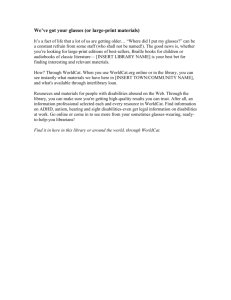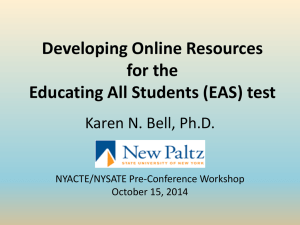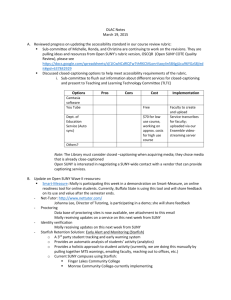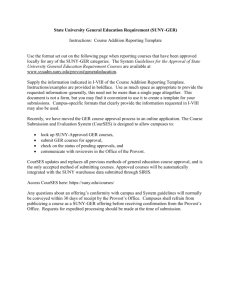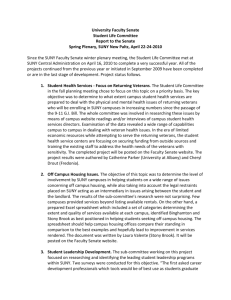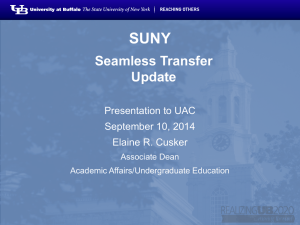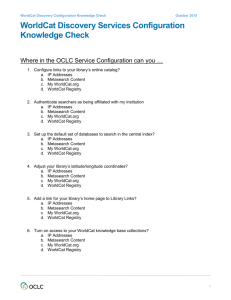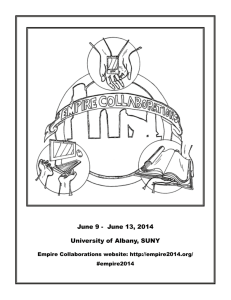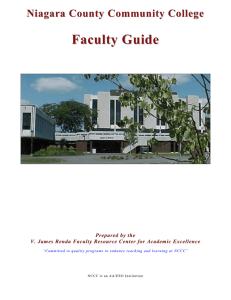SUNY Library of the Future
advertisement
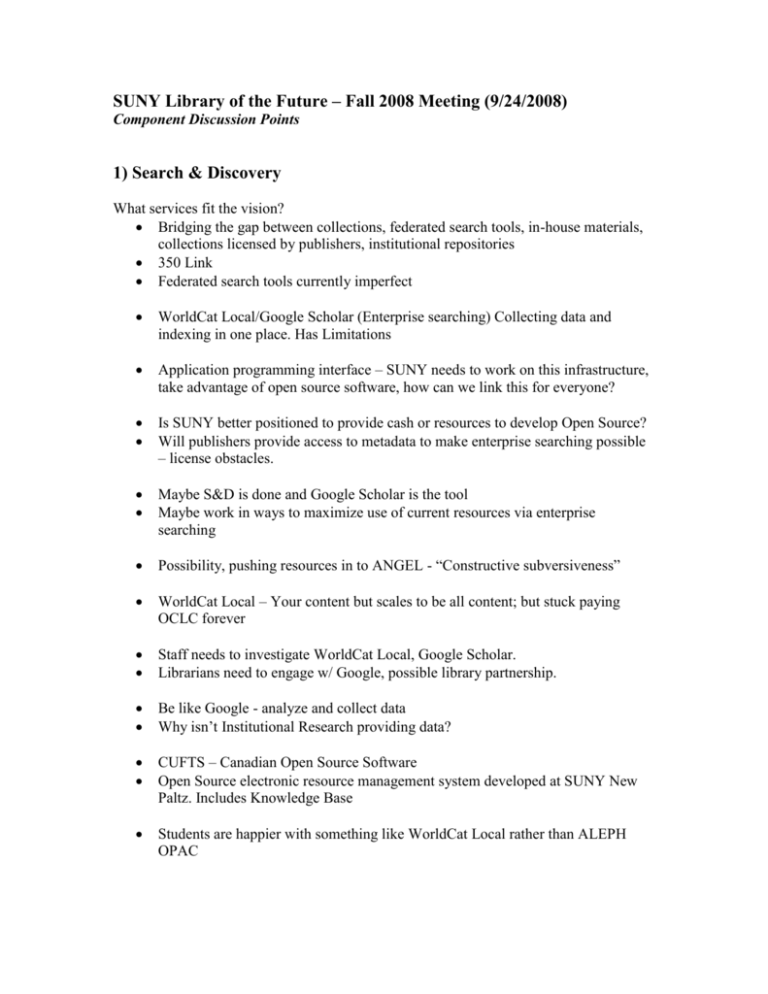
SUNY Library of the Future – Fall 2008 Meeting (9/24/2008) Component Discussion Points 1) Search & Discovery What services fit the vision? Bridging the gap between collections, federated search tools, in-house materials, collections licensed by publishers, institutional repositories 350 Link Federated search tools currently imperfect WorldCat Local/Google Scholar (Enterprise searching) Collecting data and indexing in one place. Has Limitations Application programming interface – SUNY needs to work on this infrastructure, take advantage of open source software, how can we link this for everyone? Is SUNY better positioned to provide cash or resources to develop Open Source? Will publishers provide access to metadata to make enterprise searching possible – license obstacles. Maybe S&D is done and Google Scholar is the tool Maybe work in ways to maximize use of current resources via enterprise searching Possibility, pushing resources in to ANGEL - “Constructive subversiveness” WorldCat Local – Your content but scales to be all content; but stuck paying OCLC forever Staff needs to investigate WorldCat Local, Google Scholar. Librarians need to engage w/ Google, possible library partnership. Be like Google - analyze and collect data Why isn’t Institutional Research providing data? CUFTS – Canadian Open Source Software Open Source electronic resource management system developed at SUNY New Paltz. Includes Knowledge Base Students are happier with something like WorldCat Local rather than ALEPH OPAC **Forget about developing Aleph OPAC; Go with WorldCat LOCAL – CU Cal has negotiated with OCLD OCLC has clout to negotiate with other database vendors for accessing to metadata for other resources. 360 Search – create subject guides lining to databases (e.g. Science Direct works for Business researchers). Good short-term until WorldCat local developed further, NYPL uses open WorldCat Should there be a few pilot programs OCLC agreed to provide catalog data to Google. Economies of scale – sharing human resources so each local campus does not have to pay for expertise. ** Need collaborative structure (possibly using Web 1 technology) IDS model has mentor group, each campus contributes time or SUNY OLIS positions funded by campuses. Could contract for Open Source facilitators Could Nylink play a role; does Nylink have that expertise? WALDO has hired LIBLIME (outsourcing) 2) User Education [Including Reference & Instruction] Reference – Virtual product Identify participants – in 24/7 SUNY Gen. Ed – Competency Test – ETS/ ISkills – Cal. Has adopted it Web-based – Plattsburgh will do in Spring, Info Lit & IT Tutorials on SUNYConnect Products SUNYLA – Work Group for Information Literacy Divvy-up common resources Inventory – “Best of” Tutorials, podcasts State Contract for LibGuides Methodology /Technology for capturing statistical data 3) Universal Borrowing Mission: Any SUNY stakeholder can have access to any resource needed from anywhere. Technologies Unmediated request system for journals, similar to current one for books Standardized acquisition systems with ILL tagging Collection Development Permissions for licensing Purchase on demand for articles (tag purchases) Organizational/Operational Physical delivery system to accommodate delivery to end user, either on campus, or directly to them off. Workflow Utilize staff differently Blending ILL & Circ Develop workflow to expedite timely Purchase on Demand (Evening/weekend staff) “Floating collections” - end-users campus keeps the item. “Fulfillment Centers” - centralize collection management Then special collections are those of local interest. Resources/Funding Shelving/space needs for “floating collections” Funding Partnerships (3Rs, etc) Netflix model of delivery – affordability? Possible library subsidy; Possible sharing of technology fee Savings realized from workflow changes 4) Physical Resources 1. SUNY LoF: 65th campus. All electronic SUNY digital library, easy collaboration. Not at the expense of the print collection 2. Core collections locally 3. Specialized shared collection development 4. Add AV access to SUNY 65th campus – streaming media 5. Investigating methods to get collection analysis and use statistics and information to aid collection development decision making 6. Look to University centers for centralized processing Other points: Physical facilities still very important; local needs Request library funding per FTE student

